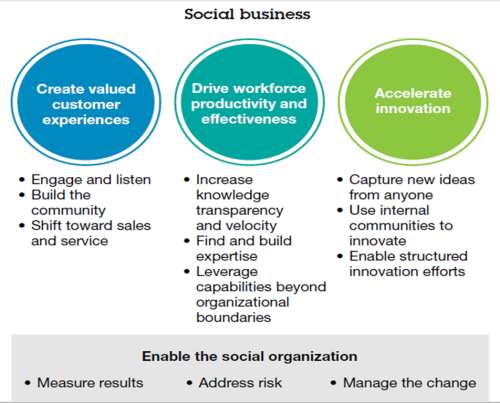In the land of HR, folks tend to think inside their bubble.
And when it comes to social media, some are early adopters (think using social media for talent acquisition) and many are laggards (think writing policies that keep people from accessing Facebook while at work).
But the truth is that there is so much more to social technology than social media. And HR needs to go to school on this.
Required reading for every HR person
I was pleased to attend IBM’s Connect Conference in Orlando last week. I was there to get insight into IBM’s acquisition of Kenexa and its commitment to building a Smarter Workforce – the brilliant marketing extension of their Smarter Planet campaign. Social business is huge. Social business at IBM is enormous — and growing.
While at the conference, I received a copy of the IBM Institute for Business Value’s report titled, The Business of Social Business: What Works and How it’s Done, that should be required reading for every HR person. It’s a sort of primer explaining what social technology is and how it is transforming the way businesses are competing in the global marketplace.
Based on survey data from 1,161 respondents and interviews with 21 executives responsible for implementing successful social business practices around the world, this report is easily consumed by non-technical business leaders (that’s you, HR Pros) and creates a much larger context for understanding the opportunities that social technology brings to an organization — and that will be coming to your organization soon!
3 key areas of social business
Despite Applebee’s and HMV’s unfortunate handling of recent experiences with social media, note that the IBM survey identified three primary areas of social business in which organizations around the world are currently investing:
- Creating valued customer experiences;
- Driving workforce productivity and effectiveness;
- Accelerating innovation.
I found it fascinating that when drilling down into the second bullet point, driving workforce productivity and effectiveness – HR’s domain – the focus was on learning and developing talent, not acquiring it. There’s a head snap for you.
Take a look at the report and look for more useful information from the IBM Institute for Business Value. And download the free “IBM IBV” app for iPad and Android from your app store so you don’t miss any new research!
This originally appeared on China Gorman’s blog at ChinaGorman.com.
